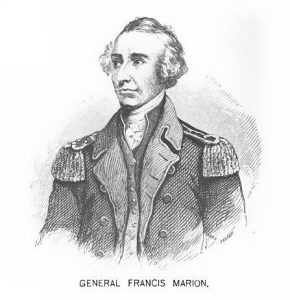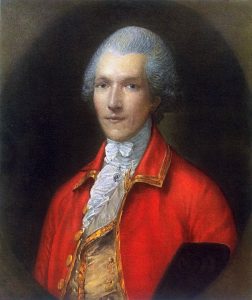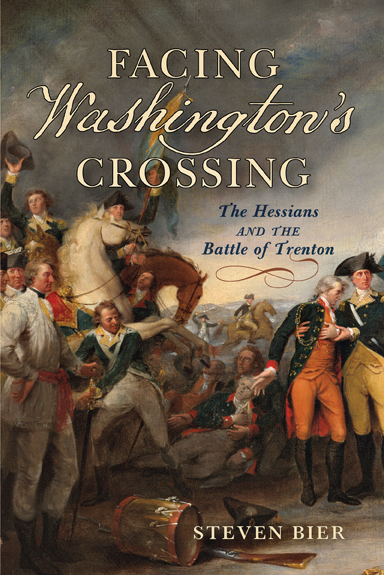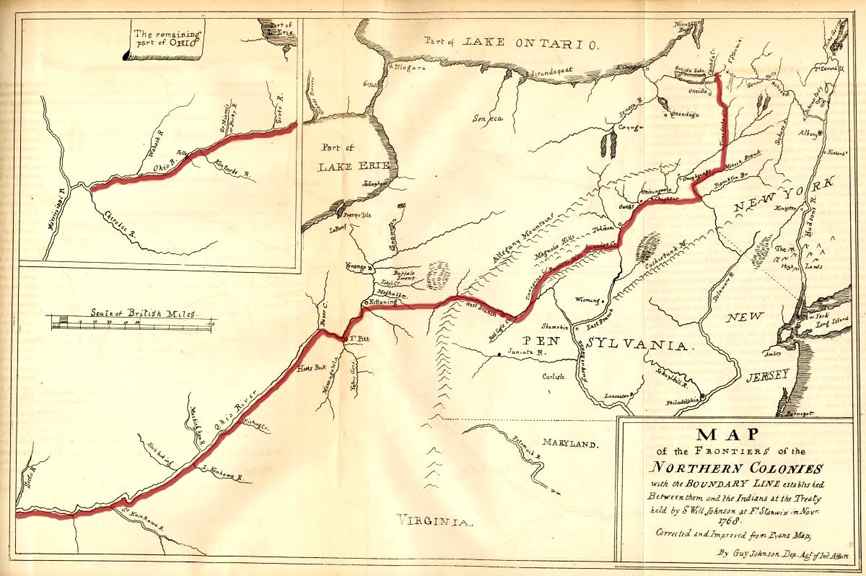During 1780 and 1781, Brigadier General Francis Marion earned a reputation as the “Swamp Fox,” a virtually unbeatable partisan commander who foiled British efforts to pacify South Carolina and who defeated or evaded every British attempt to destroy his force. It was not until 1782 that Marion finally encountered an opponent capable of beating his troops: Lieutenant Colonel Benjamin Thompson. A loyalist with almost no military experience, Thompson emerged from Charleston at the head of a British detachment and defeated Marion’s men on February 24. Even though Marion rushed into the field to take personal command of his troops, he was unable to overcome Thompson, who triumphed again in a second battle the next day.
Thompson, a Massachusetts native, had moved to New Hampshire shortly before the Revolution began. Although Governor John Wentworth commissioned him an officer in the provincial militia, Thompson saw no action and the rebels soon forced him to take refuge in Boston, where he gathered intelligence for General Thomas Gage. In 1776 Thompson carried dispatches to London, where he met Lord George Germain, Secretary of State for the American Department. Germain was impressed by Thompson’s abilities and secured him an appointment as an undersecretary in the department. After the British defeat at Yorktown in 1781, Germain knew his days in office were numbered and arranged to have Thompson commissioned as a provincial officer.[1]
Late in 1781 Thompson sailed for New York to assume command of the King’s American Dragoons, a loyalist cavalry regiment. However, bad weather forced his ship to divert to Charleston, South Carolina, where it arrived in December. The British commander there, Lieutenant General Alexander Leslie, assigned Thompson to command the army’s cavalry. The British mounted troops had been repeatedly defeated by their American counterparts, and Thompson’s appointment indicated Leslie’s desperation to find an officer who could turn his cavalry into an effective force.[2]
Undaunted by his lack of experience or the difficulty of his new assignment, Thompson set to work. On January 11, 1782, Thompson wrote to Germain that he had taken up his duties and confidently declared that “I hope you will soon hear of our doing great things.” Thompson added that the area outside Charleston was ideal for cavalry operations, with abundant forage for the horses and plenty of open ground. He noted that he had only “five weak Troops” of cavalry, but was expecting reinforcements from the South Carolina Royalists and mounted militia. A return showed that he had 119 men fit for duty, with 113 healthy horses.[3]
Four days later, Thompson had begun training his soldiers and was able to assess their condition. “Our Men, with a little Discipline, will make most excellent Troops,” he told Germain. “They have all been used to fire, and Sword, and are brave to the last degree. All they want is method, and that … they seem very fond of acquiring.” Thompson added that he had conducted two training exercises every day “and it is surprizing the proficiency they have already made in Manoevring.” The rapid improvements made Thompson even more confident, especially after he had appraised some captured Continental cavalrymen. “They are absolutely no better than Children,” he asserted. “If The Prisoners we took the other day … are a fair specimen of their Cavalry, I would venture to attack the whole with 150 of the Dragoons that are under my Command.”[4]
By January 24, Thompson exulted in the progress his cavalry showed. The reinforcements had arrived, bringing their numbers to over two hundred, “all armed with rifles as well as swords, and are perhaps the best marksmen in the world for shooting on horseback.” The previous day, Thompson had led the troops on a forty mile circuit from the British advanced post outside Charleston to a point beyond Dorchester. They had surprised an American party, killed two and captured three, and returned with a quantity of forage and some livestock.[5]

While Thompson was busy turning the British cavalry into an effective fighting force, the mounted troops in Major General Nathanael Greene’s American army were suffering from leadership problems. Lieutenant Colonel William Washington, commander of the Continental Light Dragoons attached to Greene’s army, had been captured at Eutaw Springs on September 8, 1781, when his veteran unit had been decimated. Greene’s other experienced Continental cavalry unit, the dragoons of Lieutenant Colonel Henry Lee’s Legion, was rendered less effective because Lee was sulking, having accused Greene of denying him proper credit for his service at Eutaw Springs. The only reliable leader who remained was Marion, and he was attending the session of the South Carolina legislature at Jacksonboro after winning election to the state senate. His principal subordinates, lieutenant colonels Peter Horry and Hezekiah Maham, were engaged in a dispute over rank. Despite Horry’s longer service, Maham claimed seniority and refused to take orders from Horry. Greene and Marion tried to reconcile the two officers, but without success. This feud between high ranking officers, along with Horry’s poor health, created an opportunity that Thompson would exploit.[6]
At 2 a.m. on February 24, Thompson left Daniels Island with 200 cavalry and 500 infantry, heading toward Cain Hoy. Dawn revealed that the road they were using was “cut up with fresh Tracks of horses, which appeared to have gone up in the direction in which we were marching,” Thompson reported. He immediately accelerated his march to pursue the enemy force, although slaves encountered on the road put the Americans’ numbers at 500. Thompson pushed his mounted troops hard, covering forty-five miles and leaving the infantry behind before he caught up with the enemy a half hour before sunset. The Americans, consisting of Horry’s regiment and some attached militia, were in camp at Durand’s Plantation near Wambaw Bridge on the Santee River.[7]
Horry was not present, his illness having forced him to turn over command to Lieutenant Colonel Adam McDonald. Patrols brought McDonald news of Thompson’s approach, and he assigned Major John James to lead the troops in the field. James apparently ordered the regiment to withdraw across Wambaw Creek, since upon emerging from the woods to the left of the rebel camp, Thompson “discovered their Dragoons crossing in our front to the left over a causeway and bridge.” Thompson ordered a charge, and the leading British cavalrymen managed to cut off and overwhelm “a few men” at the rear of the American column. The rest of Marion’s troops occupied a height on the opposite side of the creek about a hundred yards beyond the bridge and, Thompson noted, “formed in very good order.”[8]
Thompson followed the Americans and deployed his soldiers some thirty yards from the enemy line. When the British were in position and the Americans did not charge as Thompson expected, Major John Doyle ordered his mounted loyalists to attack. “They gave a shout, and rushed on Sword in hand with the utmost intrepidity,” Thompson observed. “The Enemy fired their Pistols and gave way in great confusion.” The British pursuit was hampered by the Americans’ removal of planks from WambawBridge and the flight of many of Horry’s troops into nearby swamps. Thompson estimated Horry’s force numbered 300 and that 30 Americans were killed on the field and several more in the pursuit. Among the dead was one of Horry’s highest ranking subordinates, Major William Benison. Thompson noted that an additional ten Americans had been killed earlier when his force encountered enemy patrols, and two prisoners were taken in these skirmishes. He mentioned that additional prisoners were taken at Durant’s Plantation, but provided no numbers. The British horsemen, having lost only one man killed and another “slightly wounded,” withdrew at sunset and fell back eight miles to Drake’s Planation, where they met the infantry.[9]
Upon learning of the defeat, Horry relayed the information to Greene. Horry asserted that McDonald’s behavior during the battle “was Proper and Uncensurable.” He blamed the deceased Benison for the rout, stating that “Major Benison (by neglect of duty) was the Cause of the Enemies so near Approach Undiscovered.” Horry estimated his regiment’s losses as “2 Officers, two Volunteers, & abt 10 Killd & a few Wounded. The Enemy took no prisoners.”[10]
The next morning, Thompson led his cavalry back to the battlefield to search for Maham’s regiment of Marion’s brigade, which he had learned was nearby. The British advanced a mile past Durand’s Plantation, riding through a wooded area until they reached a gate with clear ground behind it. Riding through the gate, Thompson “discovered the Enemy about Three Hundred yards distant, directly in front of us,” posted among the slave cabins. He quickly decided that the site was suitable for battle. “The Ground was perfectly clear between us, and the Field extended at least two Hundred Yards to our right and to our left without any fence or other Obstacle to obstruct our motions,” he wrote. “I observed that the River was close upon the Enemys rear, and there appeared to be no way by which they could escape without giving us an opportunity of attacking them. I saw by the Colours, of their uniforms that they were not the same Troops we had beaten the evening before.”[11]
Thompson had in fact found the enemy he was seeking: Maham’s regiment, led by Francis Marion in person. Marion had left Jacksonboro on February 24 after news of the British foray reached him. He joined Maham and set out for Mepkin, where he received word that Horry’s regiment had been defeated. At the head of Maham’s regiment, Marion rode thirty miles to Wambaw Creek and occupied a position at the Tydiman Plantation. He finished posting his own troops and some militia less than an hour before Thompson reached the scene.[12]
Recognizing the strength of Marion’s position, Thompson formed his troops in line of battle. “The Gateway was soe narrow that only two Horses could pass it abreast,” Thompson remarked. Nevertheless, the British troops took position “without the least confusion, or irregularity.” The mounted soldiers of the New York Volunteers, who had been the vanguard of Thompson’s force, comprised the center of the British line, with two troops of the South Carolina Royalists to each side. A troop of mounted loyalist militia took position on the right flank and a second on the left, and a few cavalrymen were held in reserve. “As soon as the Troops were formed,” Thompson wrote, “I ordered a charge to be sounded.”[13]

Moments after the British opened the attack, Thompson heard the American buglers sound the order to charge. Marion ordered his dragoons to attack, but his troops had to maneuver around a pond and were thrown into disorder. Thompson did not even realize that the Americans had attempted to make a charge. “Instead of coming out to meet us they were discovered going off by their right in the greatest hurry and confusion,” he stated, indicating the chaos among his enemy. The British rode upon them “at full speed,” and Marion’s men panicked and fled. Thompson’s troops cut off some of the fugitives, who sought refuge in a swamp along the banks of the Santee River or plunged directly into the river in their haste to escape. “Many of them were Killed in attempting to get into the River,” Thompson observed, “and others were shot and drowned in attempting to swim to the opposite shore.”[14]
Thompson boasted that he had “totally routed” a “chosen Corps under the Command of General Marion, in Person.” He did not estimate the total number of American casualties, but noted that the British took 16 prisoners, almost 40 horses, a large quantity of weapons and equipment, and “General Marions Tent.” British losses amounted to only one man wounded.[15]
Marion told Greene on March 1 that he did not yet know the number of casualties his command had suffered, but mentioned that he could confirm three deaths. He blamed his defeat on Maham’s regiment for failing to charge as ordered. “We Lost a Glorious Opertunity … of Cuting up the British Caveldry,” he complained, “if Our troops Woud have Charged; for I had no Idea of a retreat when they broke.”[16]
Demonstrating the confusion in the American ranks that day, and the poor communication between the commanders, Maham attributed the defeat to a different cause, and seemed unaware that Marion had in fact ordered an attack. “Instead of ordering a charge Which was the only thing that Could possibley of Savd our men … thay ware orderd to file of[f] to the Rite which struck the oficers & men, that thay wast to Retret, which thay did in the Gratest Confution,” Maham wrote. He also asserted that by delaying the attack to form his troops, Thompson had lost a chance at a greater victory. “Had they [British] not of halted thay whould of taken the hole Regt as there was no way for them to make there Escape but by swiming the Rivar. But there Halting gave our men Time to Git there Horses & mount and form.”[17]
Greene took the defeat in stride, telling Marion only that he was “sorry they [British] have succeeded so well as it will revive the drooping spirits of their troops and give a disponding temper to our Militia.” In actuality the effects of Thompson’s two victories were even worse for the Americans. Marion withdrew his troops west of the Santee, leaving the region east of the river open to British foraging parties to procure needed supplies for the garrison and refugees at Charleston. Maham’s and Horry’s regiments had been so weakened that they were combined into a single unit under Maham, reigniting the feud between that officer and Horry. Had Thompson remained in South Carolina, he might have taken advantage of the situation to further undermine the American position in that state. However, soon after the battles of late February he set out for his original destination, New York, having demonstrated that the British cavalry, under the command of a capable and aggressive officer, was still a dangerous force.[18]
The author would like to thank the David Library of the American Revolution in Washington Crossing, PA, for fellowship support that enabled him to find the Thompson letters cited in this essay.
[1] C. Harrison Dwight, “Count Rumford: His Majesty’s Colonel in Carolina,” South Carolina Historical Magazine, Vol. 57, No. 1 (Jan. 1956), 23.
[2] Dwight, Count Rumford, 23-24; Benjamin Thompson to Lord George Germain, Jan. 11, 1782, Lord George Germain Papers, Vol. 15, William L. Clements Library, Ann Arbor, MI.
[3] Thompson to Germain, Jan. 11, 1782; Return of Thompson’s Cavalry, Jan. 11, 1782, Germain Papers, Vol. 15.
[6] Robert D. Bass, Swamp Fox: The Life and Campaigns of General Francis Marion (Orangeburg, SC: Sandlapper Publishing, 1974), 224-227.
[7] Thompson to Alexander Leslie, Feb. 24, 1782, British Headquarters Papers, Vol. 90, No. 9952, microfilm, David Library of the American Revolution, Washington Crossing, PA; Bass, 230.








5 Comments
Thompson’s a wonderful character. While still in New England in 1775, he managed to have an affair with the wife of printer Isaiah Thomas, send invisible ink reports from the Boston siege lines to Gen. Thomas Gage, and convince his best friend Loammi Baldwin that he genuinely wanted an appointment in the American army, so much so that American historians didn’t fully acknowledge his treachery until the 20th century.
There were also persistent whispers that the way Thompson impressed Germain involved sex, though how exactly is unclear. And of course after the Revolution he made major contributions to science, married Mme. Lavoisier, and ran a small German country for a while.
Thank you for a thoroughly engaging, well researched article which proves that the partisan battles in the revolutionary south were individually not as important as collectively strategic. I also found compelling your focus on the quality of leadership as a major determinant of the outcome of battles and wars.
In November, 1782, Thompson occupied Huntington, Long Island with about 550 light horse and infantry, mostly the remnants of the Queens Rangers and British Legion. Contemptuous of the residents, whom he derided as rebel sympathizers—which most of them were– he forced the townspeople to erect a fortification on top of the village burial ground. To compound this act of destruction and desecration, he had his men tear up fruit trees, fences, and barns. A local Congregationalist/Presbyterian meeting house was ripped apart for the wood used in the construction of the redoubt which anchored his new stronghold.
Incensed, Major Benjamin Tallmadge prepared an expedition to cross Long Island Sound from Connecticut, roll up Thompson’s garrison, and destroy the fort. To his great regret, bad weather and fears that an escaped Tory privateer had warned Thompson of the impending raid, forced Tallmadge to scrub the mission.
So, is that the incident from the recent episode of ‘Turn’?
If you mean the uprooting of the gravestones, that happened methodically at Huntington in late 1782. At Setauket, Hewlett, who was a Long Island Tory in Oliver DeLancey’s Brigade and wouldn’t have spoken like a stereotypical British fop, used the Presbyetrian Church as a barracks and destroyed part of the burial grounds to fortify his position. This occured in 1777. Hewlett’s post was attacked by Col. Samuel Webb in an expedition which included Caleb Brewster. After an ineffectual exchange of musketry, Webb called off the attack and returned to Connecticut, fearing he be cut off. Indeed, he was captured along with sixty of his men (not including Brewster) in a similar raid later in the year.
Certainly many gravestones were destroyed or damaged at Setauket, though not on the scale of Huntington. The Presbyterian churches in both Huntington and Setauket had to be rebuilt after the war.